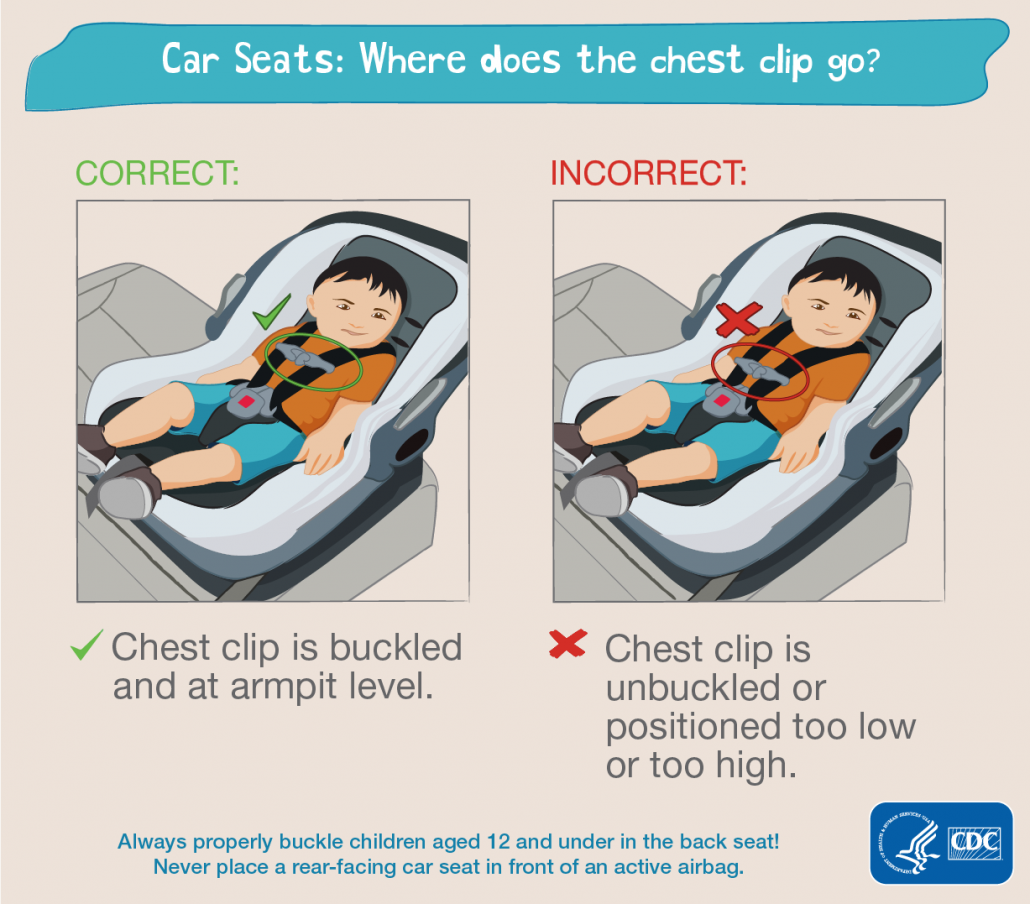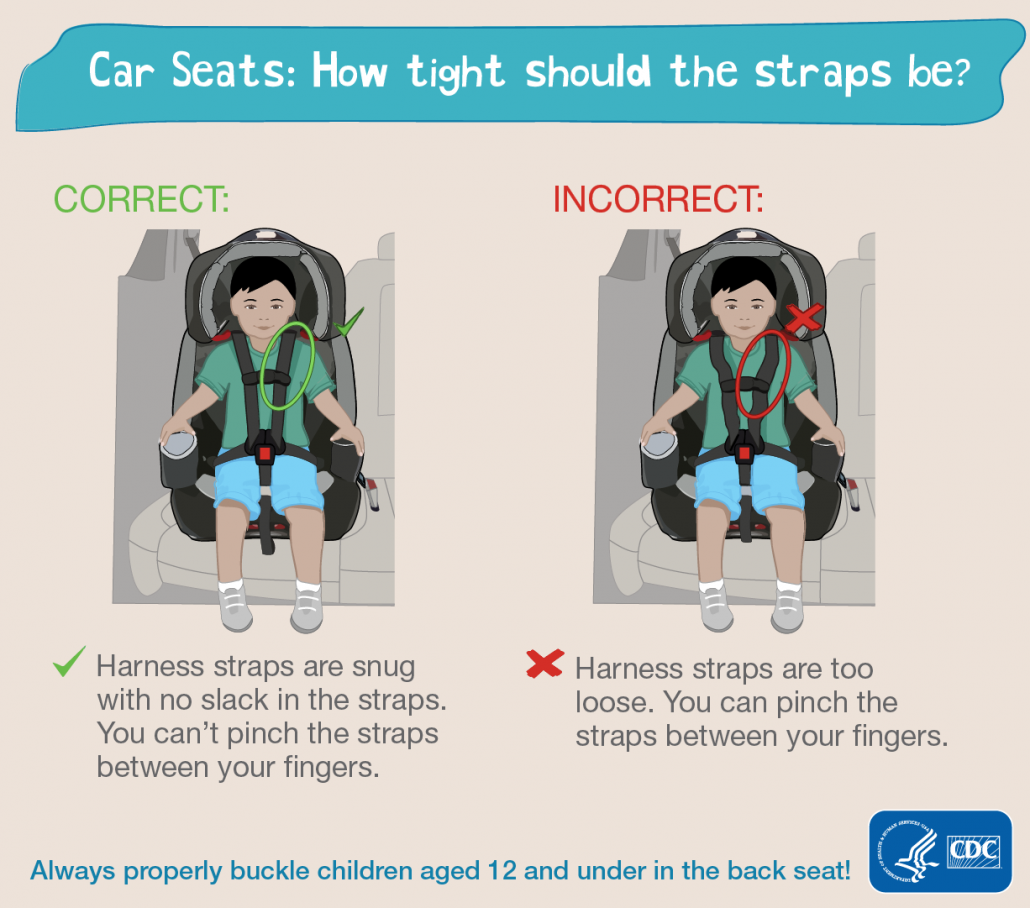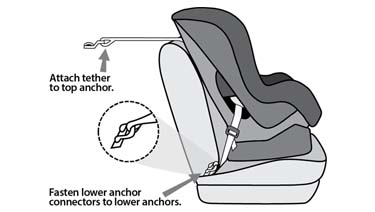Car Seat 101 – Where to Start
If it’s your first time buying a car seat, you might be overwhelmed by the multitude of options and guidelines available to choose from. Car seats are one of the most important purchases you can make to protect your baby and there’s a lot to know before you purchase.
Fast Facts:
Road injuries are the leading cause of preventable deaths and injuries to children in the United States.
Correctly used child safety seats can reduce the risk of death by as much as 71 percent.
More than half of car seats are not used or installed correctly.
1.) What kind of car seat do I need?
The most important thing to know before you start shopping is that there are several different car seat types, and you’ll want to make sure you are picking the right one for the right stage of your child’s development.

Rear-facing seats come in a variety of styles. Many models come with a base that is installed in your vehicle and the actual seat snaps in and out for easy child transport. Others do not detach from the seat until you are ready to uninstall it. This is largely a parental preference.

Combination seats also have a seat belt positioner for when the child is old enough to transition to using the car’s built-in seat belt. Check your local laws, as the minimum age to transition from the harness to the seat-belt varies from state-to-state.
Some combination seats can also be used as a rear-facing seat. Be sure to check the manufacturer’s specifications before using it to rear-face an infant.
Unless noted by the manufacturer, booster seats do not need to be installed in the car like rear and forward-facing seats, but instead are positioned under the child. Because car seat belts are designed for adults, booster seats help position the child’s body so that they are at the same angles and positions where a seat belt would rest on an adult passenger.
Check your state’s law on the required age range for booster seat use. The American Academy of Pediatrics recommends that all children should use a belt-positioning booster seat until the vehicle lap and shoulder seat belt fits properly, typically when they have reached 4 feet 9 inches in height and are between 8 and 12 years of age.
2.) Does Price Matter?
While in other industries, a higher price tag may be a symbol of better quality, there is very little evidence to suggest that more expensive seats are any safer than their less expensive counterparts.
All car seats on the market undergo the same rigorous testing and are held to the same standards and regulations regardless of price.
The difference in price can account for additional traits a parent might look for when purchasing a car seat, such as style, included accessories, size, ease of installation and use, all-in-one, or extended weight limits.
The biggest threat to your child’s car seat safety isn’t the price tag, but rather that your child is in the right seat for their weight and age and that the seat is properly installed in the vehicle.
3.) How do I install this thing?
Depending on both your car seat specs or your car’s features, there are two ways car seats can be installed, using the car’s LATCH system or using the car’s existing seat belt.
LATCH stands for Lower Anchors and Tethers for Children. These are anchor points built into the car’s frame or seat that use the special hooks pre-installed on your car seat by the manufacturer. The LATCH points are unusually found in the crevice created where the seat and the seatback meet. You may have to feel for them, or they may be labeled by the car’s manufacturer.

Both of these options, if done correctly, are just as safe. If you need more help with this part (and don’t fret if this seems to be the most confusing part!) check the website or youtube channel for your car seat’s manufacturer. Most companies have instructional videos that can help guide you through the learning process.
4.) Where can I learn more?
There are many online resources that can help keep your little passengers safe! We recommend the following:
Safe Kids Worldwide
A non-profit organization dedicated to keeping kids safe. Find helpful diagrams and safety information on keeping your kids safe in the car. Research car seat information specific to your state and find a car seat check event scheduled near you.
The Car Seat Lady
A resource developed by a team of Medical Providers and Child Passenger Safety Technicians, follow them on their website and social media pages to access guides, reviews, recommendations, and more.
Car Seat for the Littles
A community-driven resource for car seat safety information, you can access car seat guides, recall alerts, and manufacturer-specific information as well as search for Car Seat Safety Technicians in your community. They also maintain a Facebook group where you can ask questions and stay up-to-date with the latest guidelines, laws, and recalls.
National Highway Traffic Safety Administration
Learn about car seat safety testing requirements, laws regarding child passenger safety, installation guides, recall information and locate a car seat inspection site nearest you.
Your state agencies’ child passenger safety resources. This is where you can find information specific to your state laws on car seat use.
If you have additional questions, speak with your child’s pediatrician’s office or your local health department. They may be able to help you locate additional resources in your community.
Sources:

